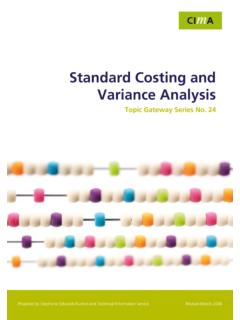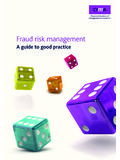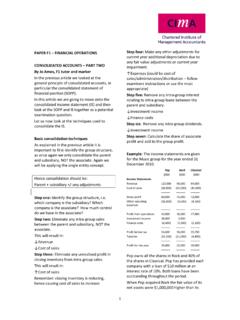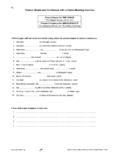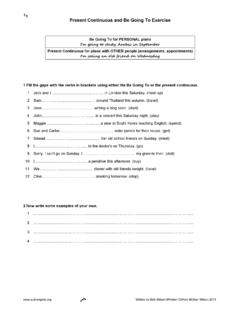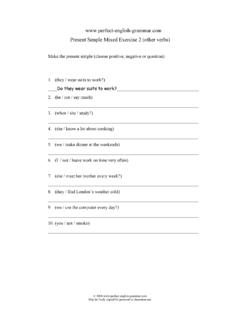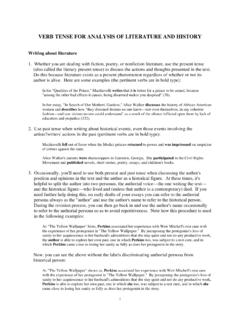Transcription of PRESENT VALUE TABLE
1 PRESENT VALUE TABLE PRESENT VALUE of $1, that is where r = interest rate; n = number of periods until payment or receipt. nr 1 Interest rates (r) Periods (n) 1% 2% 3% 4% 5% 6% 7% 8% 9% 10% 1 2 3 4 5 6
2 0705 7 8 9 10 11 12 13 14 15 16 17 18 19 20 Interest rates (r) Periods (n)
3 11% 12% 13% 14% 15% 16% 17% 18% 19% 20% 1 2 3 4 5 6 7 8 9 10 11 12 13
4 14 15 16 17 18 19 20 The Chartered Institute of Management Accountants 2010 Cumulative PRESENT VALUE of $1 per annum, Receivable or Payable at the end of each year for n years rrn )(11 Interest rates (r) Periods (n)
5 1% 2% 3% 4% 5% 6% 7% 8% 9% 10% 1 2 3 4 5 6 7 8 9 10 11 12 13
6 14 15 16 17 18 19 20 Interest rates (r) Periods (n) 11% 12% 13% 14% 15% 16% 17% 18% 19% 20% 1 2 3 4 5 6
7 7 8 9 10 11 12 13 14 15 16 17 18 19 20 May 2010 2 Performance Operations
8 FORMULAE PROBABILITY A B = A or B. A B = A and B (overlap). P(B A) = probability of B, given A. Rules of Addition If A and B are mutually exclusive: P(A B) = P(A) + P(B) If A and B are not mutually exclusive: P(A B) = P(A) + P(B) P(A B) Rules of Multiplication If A and B are independent: P(A B) = P(A) * P(B) If A and B are not independent: P(A B) = P(A) * P(B | A) E(X) = (probability * payoff) DESCRIPTIVE STATISTICS Arithmetic Mean nxx ffxx (frequency distribution) Standard Deviation nxxSD2)( 22xffxSD (frequency distribution) INDEX NUMBERS Price relative = 100 * P1/P0 Quantity relative = 100 * Q1/Q0 Price: 100 x wPPwo1 Quantity: 100 x 1wQQwo TIME SERIES Additive Model Series = Trend + Seasonal + Random Multiplicative Model Series = Trend * Seasonal * Random May 2010 3 Performance Operations FINANCIAL MATHEMATICS Compound Interest (Values and Sums) Future VALUE S, of a sum of X, invested for n periods, compounded at r% interest S = X[1 + r]n Annuity PRESENT VALUE of an annuity of 1 per annum receivable or payable for n years, commencing in one year, discounted at r% per annum: PV = nrr]1[111 Perpetuity PRESENT VALUE of 1 per annum, payable or receivable in perpetuity, commencing in one year, discounted at r% per annum: PV = r1 LEARNING CURVE Yx = aXb where.
9 Yx = the cumulative average time per unit to produce X units; a = the time required to produce the first unit of output; X = the cumulative number of units; b = the index of learning. The exponent b is defined as the log of the learning curve improvement rate divided by log 2. INVENTORY MANAGEMENT Economic Order Quantity EOQ = hoCD2C where: Co = cost of placing an order Ch = cost of holding one unit in Inventory for one year D = annual demand May 20



